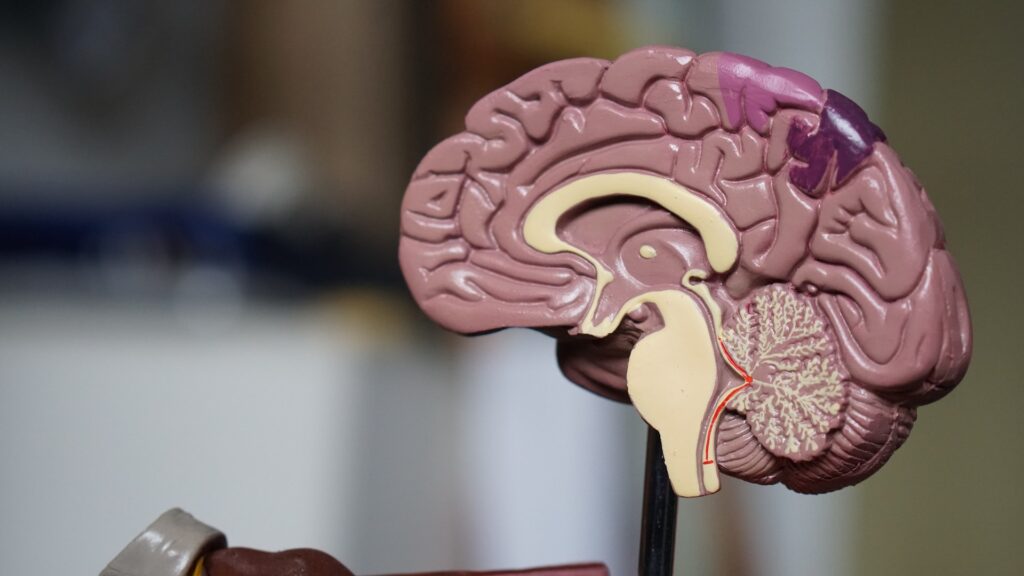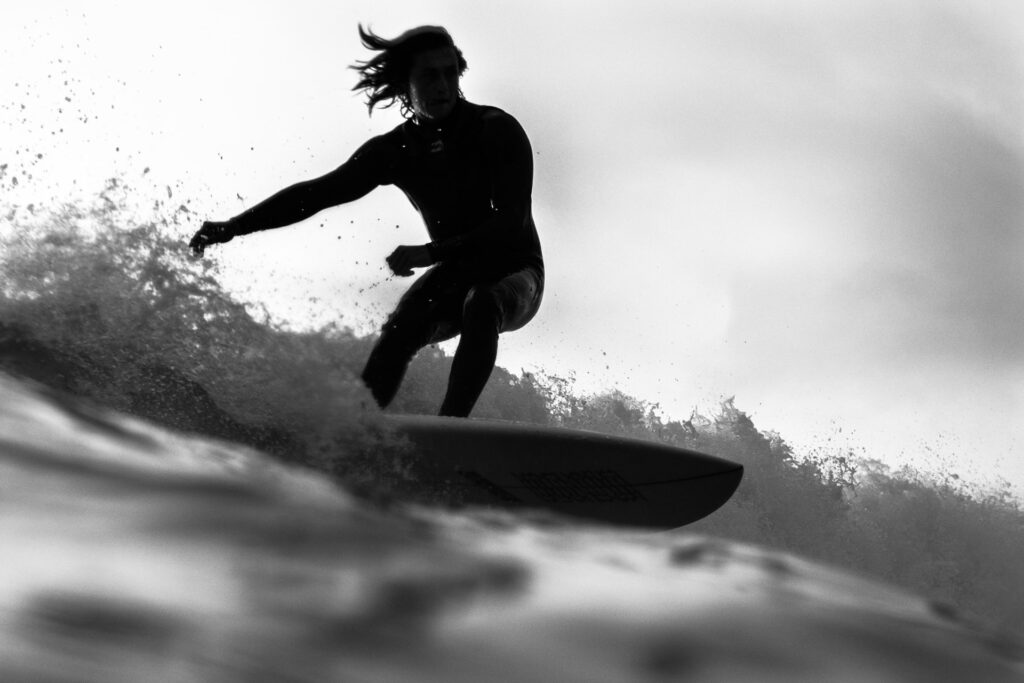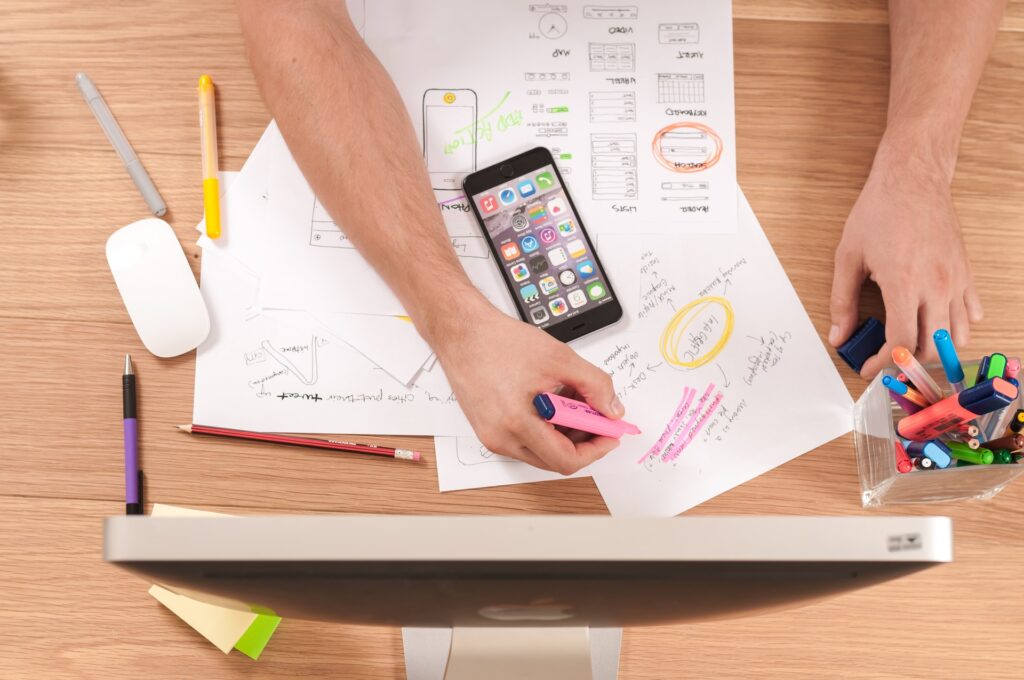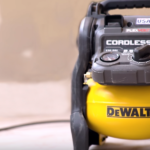Do you think of yourself as a naturally creative person?
Many people don’t. In fact, only 25% of people worldwide believe that they are living up to their creative potential.
Creativity is something that everyone struggles with to some degree – even professional artists.
But what you’ll find is that the people that are the most creative always have a method and a process.
This article is about the science and philosophy behind creativity. It’s meant to give you some ideas and help you develop your own methods for unlocking your creative potential.
Be more creative by seeing yourself as a creative person

Have you ever noticed that some people tend to do more creative activities while others are more logical?
I always noticed the same thing. As a kid growing up, I never painted or drew. I was more involved in sports and things with engines. It wasn’t until I was 19 years old that I first picked up an airbrush and started body painting for a living! All of a sudden, I went from never painting anything creative, to painting up to 50 people a night, several weekends a month. I came up with unique designs for every single person that I painted!
This transformation was only possible after I started seeing myself as a creative person.
The science on self image has been around for decades now. A great book about the power of self image is Psycho Cybernetics by Maxwell Maltz. The book explains how all people have an internal mechanism that acts consistently with how they see themselves. The mechanism cannot be turned off. However, it can be tuned to achieve different behaviors and outcomes.
Maxwell Maltz shows that your self image acts as a sort of glass case for your potential. This means that if you do not see yourself as a creative person, you will not merely have a neutral disposition towards creative pursuits, you will actually become uncreative.
Therefore, the first step to becoming more creative is to see yourself as a naturally creative person. It is better to tell yourself that you are a creative person that needs to practice, rather than than that you are not a creative person that is learning to become creative. Both statements could be subjectively true, but only one will allow you to actually become more creative.
Be more creative by using the creative part of your brain

Many people have trouble being creative simply because they don’t use the creative part of their brain.
Human beings are mammals with extremely developed brains. The cerebral cortex is the main part of the brain that separates us from other animals. Cerebral cortex development is generally bigger for higher thinking mammals such as humans or dolphins. Two subdivisions of the cortex are the neocortex and the allocortex.
Roughly speaking, the neocortex is a “newer” evolutionary development in mammalian brains. Robust neocortex development in humans allows us to think logically and systematically.
Conversely, the allocortex is an “older” part of the brain that involves more primitive feeling and instinctual processes. Allocortex activity is better suited to free flowing patterns rather than step by step methods.
Not that there’s anything wrong with using your neocortex. In fact, neocortex activity is good because it means that you’re using your brain to solve logical problems. The issue is that the neocortex is not great at being creative.
A sign that you are too stuck in your neocortex is that your body exhibits “neurotic holding patterns”:
- You are stiff and controlled in your mannerisms.
- You think intensely about the “right” thing to say or do
- You think and experience your brain and body as separate
- You believe implicitly or explicitly that every action needs to have a logical reason
Stagnant logic-based thinking leads to stiffness in the body and vice-versa. To combat neurotic holding patterns and get those creative juices flowing, you need to breath, shake, and express yourself.
How to do bioenergetics
To get rid of stiffness and engage your allocortex, follow this bioenergetic sequence posted by strongman and prolific youtuber Elliot Hulse:
Step 1. Open the entire front of your body (chest, abdomen, mouth, face, etc.)
Step 2. Breath deeply and intensely for 10 – 20 breaths
Step 3. Shake your body in random patterns
Step 4. Freely express your emotions
Sometimes it takes 2 or 3 cycles of bioenergetics to get the full effect. It’s an intense exercise, but you will feel light, energetic, care-free, and creative after you do it.
The whole point of doing something like bioenergetics is to experience your brain body connection. Many scientists, psychoanalysts, and phillosophers have been talking about the brain body connection for over a century (check out the work of Wilhelm Reich and Mark Hyman for more on this.) Become more spontaneous and expressive in your body, and your mind will follow.
Be more creative by connecting with the MUSE
“This is the other secret that real artists know and wannabe writers don’t. When we sit down each day and do our work, power concentrates around us. The Muse takes note of our dedication. She approves. We have earned favor in her sight. When we sit down and work, we become like a magnetized rod that attracts iron filings. Ideas come. Insights accrete.”
Steven Pressfield, The War of Art: Break Through the Blocks & Win Your Inner Creative Battles
In another post, I introduced a book that was massively influential in the development of my creative process — The War of Art by Steven Pressfield. The premise of the book is that art is a process and you have to consider yourself as a professional that engages with an artistic process on a consistent basis.
Pressfield (among many other artists) talk about creative expression coming to them from a source outside their bodies. Pressfield calls this source the “muse”. He explains the creative process being one where you show up in your physical, mental, and spiritual body ready and available to accept the muse. The muse will not always come to you, but you have to be open and ready or else it will never come to you.
FLOW State

Once the muse comes to you, the creative output will flow through you like an instrument. Flow State is a well documented psychological phenomenon which science doesn’t yet fully understand. The book Flow: The Psychology of Optimal Experience by Mihaly Csikszentmihalyi provides an excellent collection of investigations into flow state.
The premise of flow state is a physiological state where you are optimally engaged in a task – it is not so difficult that you are stressed, but also sufficiently difficult to engage your problem solving faculties.
Flow state is so important to the creative process because it allows you to access your entire being. You get into the moment and just let the ideas “flow”. Oftentimes, two much “thinking” can get in the way of new ideas and productivity (another reason to experience your brain body connection).
When you get into flow state, you should experience:
- Complete concentration on the task;
- Clarity of goals and reward in mind and immediate feedback;
- Transformation of time (speeding up/slowing down);
- The experience is intrinsically rewarding;
- Effortlessness and ease;
- There is a balance between challenge and skills;
- Actions and awareness are merged, losing self-conscious rumination;
- There is a feeling of control over the task.
(From positivepsychology.com)
Once you practice accessing the muse, you should get into flow state more consistently and find yourself becoming more creative.
Be more creative by going through a process

Creative types often describe creativity as a method or a process. This is to say that you can’t “do” creativity. You can “do” your taxes or “do” arithmetic because these activities have clear-cut logical parameters. What I mean is that there is a progression from step A to step Z to complete these logical tasks.
Creativity is more like a cyclical process – the conditions for creativity to flourish influence the creative output that it surrounds. One framework that has been massively helpful to me is the “Energy Field Model” from the book Power vs. Force by David R. Hawkins. The idea is that energy fields influence tangible outcomes more than the step by step process on the surface.
While I must admit that this area of scientific inquiry is controversial, the energy field model fits nicely with the process-oriented creative method I’ve laid out here. Notice how none of the creative processes laid out above have a specific outcome in mind? This is intentional.
Creativity is not described as a desired outcome, rather it is a desired state. By trying to achieve a certain outcome (say trying to paint an “amazing” work of art) you risk over-engaging your logical mind and, in effect, taking yourself out of the flow.
This paradigm shift is tricky for almost everyone. The reason being that modern humans are so fond of our dear logical processes, and understandingly so! The marvels of modern medicine, technology, and engineering are products of rigorous scientific inquiry and logical thinking. But each power has its accompanying poison.
Combine logic and creativity
In school, we’re taught about the four R’s: Reading, wRiting, and aRithmetic – all logical processes. (while there is some creativity in writing, we are still taught that there is a “right” way and a “wrong” way to shape characters, space your letters, etc.).
To be clear, I love logic. I think there is a place for logical step by step processes in any endeavor, even artistic ones. You’ll notice that much of this site is dedicated to giving you instructions on how to airbrush and body paint technically and effectively.
Creativity is something different. You cannot force creativity. Rather, you discover it, allow it to come to you, foster it, and engage with it. Therefore, creativity is best used in tandem with logic – get the best of both worlds by diversifying your thinking and understanding both processes.
Be more creative by developing your own methods

The beautiful thing about creative methods is that you can exercise your creativity to create them!
Over the years, I have experimented with many different “methods”. The ideas listed in this article are the ones that seemed to work for me the best. Adjust your self image, engage your mind-body connection, allow the muse to come to you, get into flow state, and trust in your process – I am very fond of these methods and I will stand behind them because they work for me.
That doesn’t mean they will all work for you.
The truth is that creativity is more of an art than a science. You will have to experiment to come up with what works for you. The most prolific artists throughout history usually had eccentric or weird methods. For example John Lennon would stay indoors for weeks doing acid and writing music. Michelangelo would obsessively draw sections of human anatomy in a sort of creative journal.
The point is that creativity can be weird and elusive in nature.
So don’t be afraid to get a little weird and eccentric yourself!
Most of us are trained from a young age to behave and fit into a small box that is considered “normal”.
I encourage you to be abnormal.
Try new artistic pursuits, challenge yourself, think outside the box, and keep close track of how your creativity responds.
Discovering your creativity is a worthy challenge. But when you connect with the muse, and find your flow, you will truly experience one of the premier ecstasies of life.






